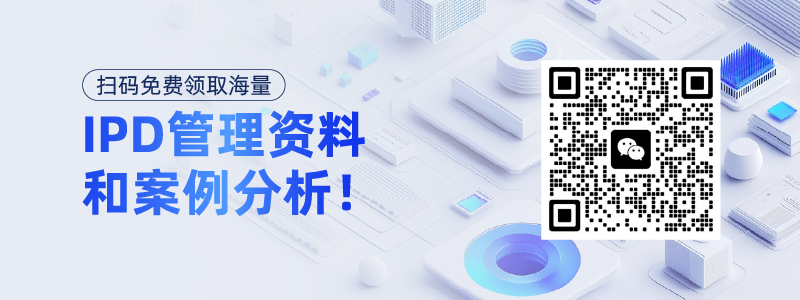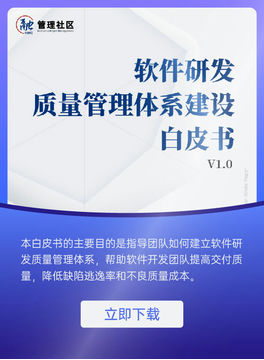Origins and Basics of IPD
Huawei adopted the IPD system in response to the increasing complexity of the telecommunications market and the need for more efficient product development processes. The IPD concept originated from Western companies, especially those in the high - tech sector, where the challenges of rapid technological change, intense competition, and diverse customer requirements demanded a more integrated approach. At its core, IPD emphasizes cross - functional collaboration, concurrent engineering, and a market - driven product development philosophy.
Huawei recognized that the traditional R & D organizational structure, which was often siloed with different departments working in isolation, was no longer sufficient. The IPD system was designed to break down these barriers. It introduced a framework where various functions such as marketing, R & D, manufacturing, and procurement would work together from the very beginning of a product's concept stage. This ensured that all aspects of the product, from its marketability to its manufacturability, were considered simultaneously, reducing development cycles and improving product quality.
The implementation of IPD at Huawei was not a simple task. It required a fundamental shift in the company's culture and mindset. Employees had to learn to work in a more collaborative environment, sharing information and resources across departments. The company also had to invest heavily in training and change management to ensure that the new system was understood and embraced by all levels of the organization.
Impact on the R & D Team's Organizational Structure
Cross - Functional Teams
One of the most significant impacts of IPD on Huawei's R & D team structure was the formation of cross - functional teams. Under the IPD framework, instead of having separate R & D, marketing, and manufacturing teams working independently, multi - disciplinary teams were created. These teams included representatives from different functions who were responsible for a particular product or product line from start to finish.
For example, in the development of a new smartphone, the cross - functional team would consist of R & D engineers responsible for the technical design, marketing professionals to understand market needs and define product features, and manufacturing experts to ensure the product could be mass - produced efficiently. This setup allowed for real - time communication and decision - making. If a marketing representative identified a new trend in consumer preferences during the development process, they could immediately communicate it to the R & D team, who could then adjust the product design accordingly.
The cross - functional teams also helped in reducing the time wasted in handoffs between different departments. In the traditional structure, there were often delays and misunderstandings when one department completed its task and passed it on to the next. With cross - functional teams, all members were involved in the entire process, leading to a more seamless and efficient development cycle.
Hierarchical Flattening
IPD also led to a flattening of the hierarchical structure within Huawei's R & D teams. In the past, the R & D organization had a more traditional, top - down hierarchical structure with multiple layers of management. This structure often led to slow decision - making, as information had to pass through several levels of management before any action could be taken.
The IPD system promoted a more decentralized decision - making process. Cross - functional teams were given more autonomy to make decisions regarding their products. This meant that junior engineers and other team members could contribute directly to important decisions, without having to wait for approval from multiple levels of management. For instance, in the case of a minor design change to improve the user experience of a product, the cross - functional team could make the decision on the spot, rather than going through a long approval process.
The flattening of the hierarchy also enhanced the sense of ownership among team members. When employees have more say in the decision - making process, they feel more responsible for the success of the product. This, in turn, led to higher levels of motivation and innovation within the R & D teams.
Role Redefinition

Another aspect of the impact of IPD on Huawei's R & D team structure was the redefinition of roles. Traditional roles within the R & D department became more fluid. For example, R & D engineers were no longer just focused on technical development. They also had to engage with marketing teams to understand market requirements and with manufacturing teams to ensure the feasibility of their designs.
Marketing professionals, on the other hand, had to be more involved in the technical aspects of the product. They needed to understand the capabilities and limitations of the technology to accurately communicate the product's value to customers. This role redefinition required employees to acquire new skills and knowledge. Huawei provided extensive training programs to help employees adapt to these new roles.
The redefinition of roles also led to a more diverse skill set within the R & D teams. Employees were encouraged to cross - train in different areas, which made the teams more flexible and adaptable to changing market conditions and technological challenges.
Benefits and Challenges of the Transformed Structure
Benefits
The new organizational structure brought about by IPD has brought numerous benefits to Huawei's R & D teams. Firstly, product development cycles have been significantly reduced. By having all relevant functions working together from the start, issues can be identified and resolved much earlier in the process. This has allowed Huawei to bring new products to market more quickly, giving it a competitive edge in the fast - paced telecommunications market.
Secondly, product quality has improved. The cross - functional collaboration ensures that all aspects of the product, such as performance, usability, and reliability, are considered. For example, manufacturing experts can provide input on the design to ensure that the product can be produced with high quality and consistency. This has led to higher customer satisfaction and a stronger brand reputation for Huawei.
Finally, the new structure has fostered a culture of innovation. The flattening of the hierarchy and the cross - functional teams have created an environment where ideas can flow freely. Junior employees can share their innovative ideas with senior members, and different perspectives from various functions can be combined to develop truly innovative products.
Challenges
However, the transformation also presented some challenges. One of the main challenges was cultural resistance. Some employees were used to the traditional way of working and found it difficult to adapt to the new collaborative and cross - functional environment. There were also initial issues with communication within the cross - functional teams. Different functions had their own jargon and ways of working, which sometimes led to misunderstandings.
Another challenge was the need for continuous training and development. As roles were redefined and new skills were required, Huawei had to invest a significant amount of resources in training its employees. Ensuring that all employees had the necessary skills to perform their new roles effectively was a continuous struggle.
In addition, the new structure required more sophisticated project management tools and systems. Huawei had to implement new software and processes to manage the complex interactions within the cross - functional teams and to track the progress of product development projects.
Conclusion
Huawei's adoption of the IPD system has had a revolutionary impact on the organizational structure of its R & D teams. The formation of cross - functional teams, the flattening of the hierarchy, and the redefinition of roles have all contributed to a more efficient, innovative, and competitive R & D environment. The benefits, such as shorter product development cycles, improved product quality, and a culture of innovation, have helped Huawei become a global leader in the telecommunications industry.
However, the transformation was not without challenges. Overcoming cultural resistance, providing continuous training, and implementing appropriate project management tools were all necessary steps in ensuring the success of the IPD implementation. As the technology landscape continues to evolve, Huawei will need to further refine its IPD - based organizational structure to stay ahead of the competition. Other companies in the industry can also learn from Huawei's experience, understanding the importance of a well - designed product development system and the impact it can have on the organizational structure of R & D teams. By embracing cross - functional collaboration, flattening hierarchies, and redefining roles, companies can enhance their innovation capabilities and improve their overall business performance.
ARTICLE TITLE :The impact of Huawei's IPD on the organizational structure of the R&D team ,AUTHOR :ITpmlib

















